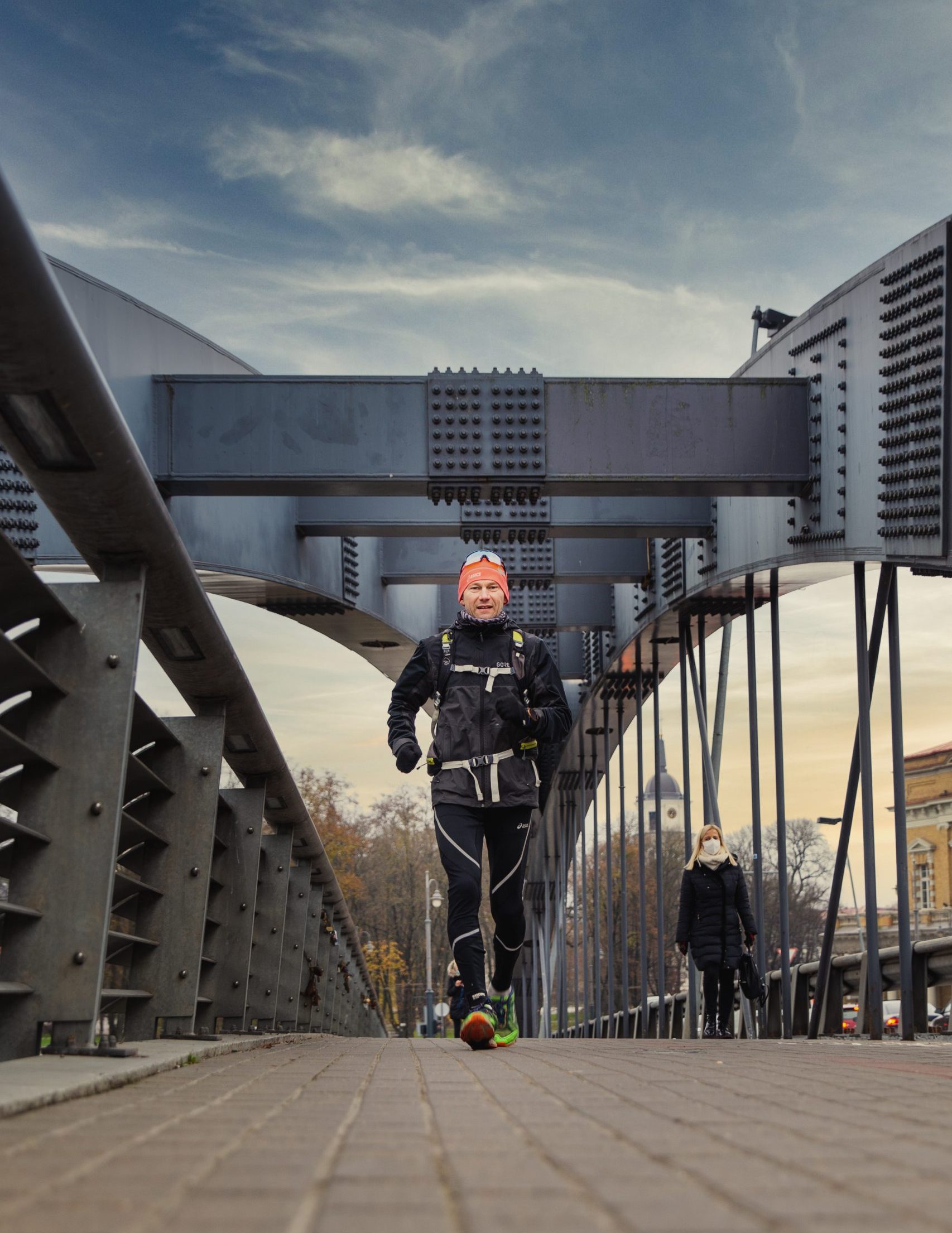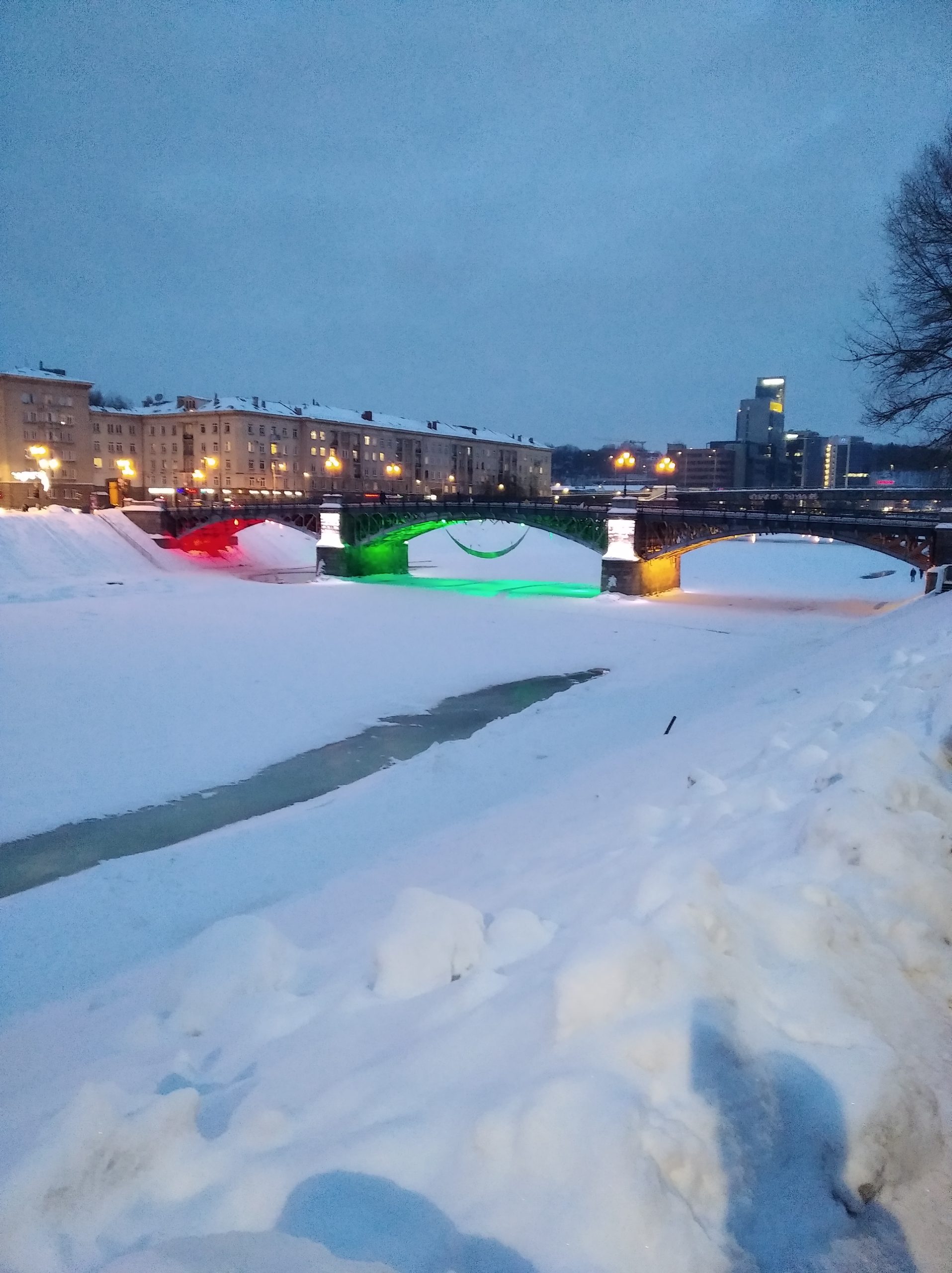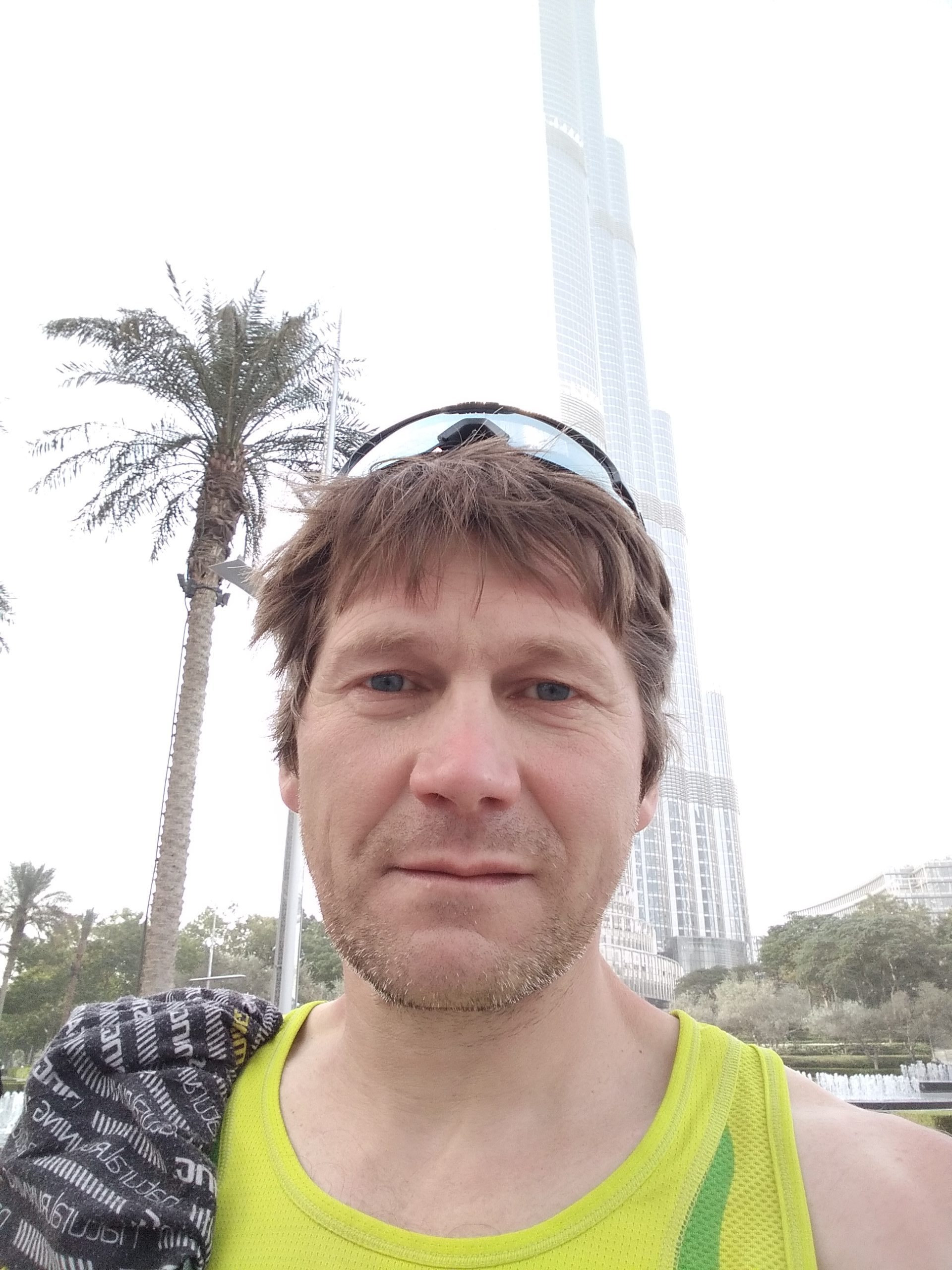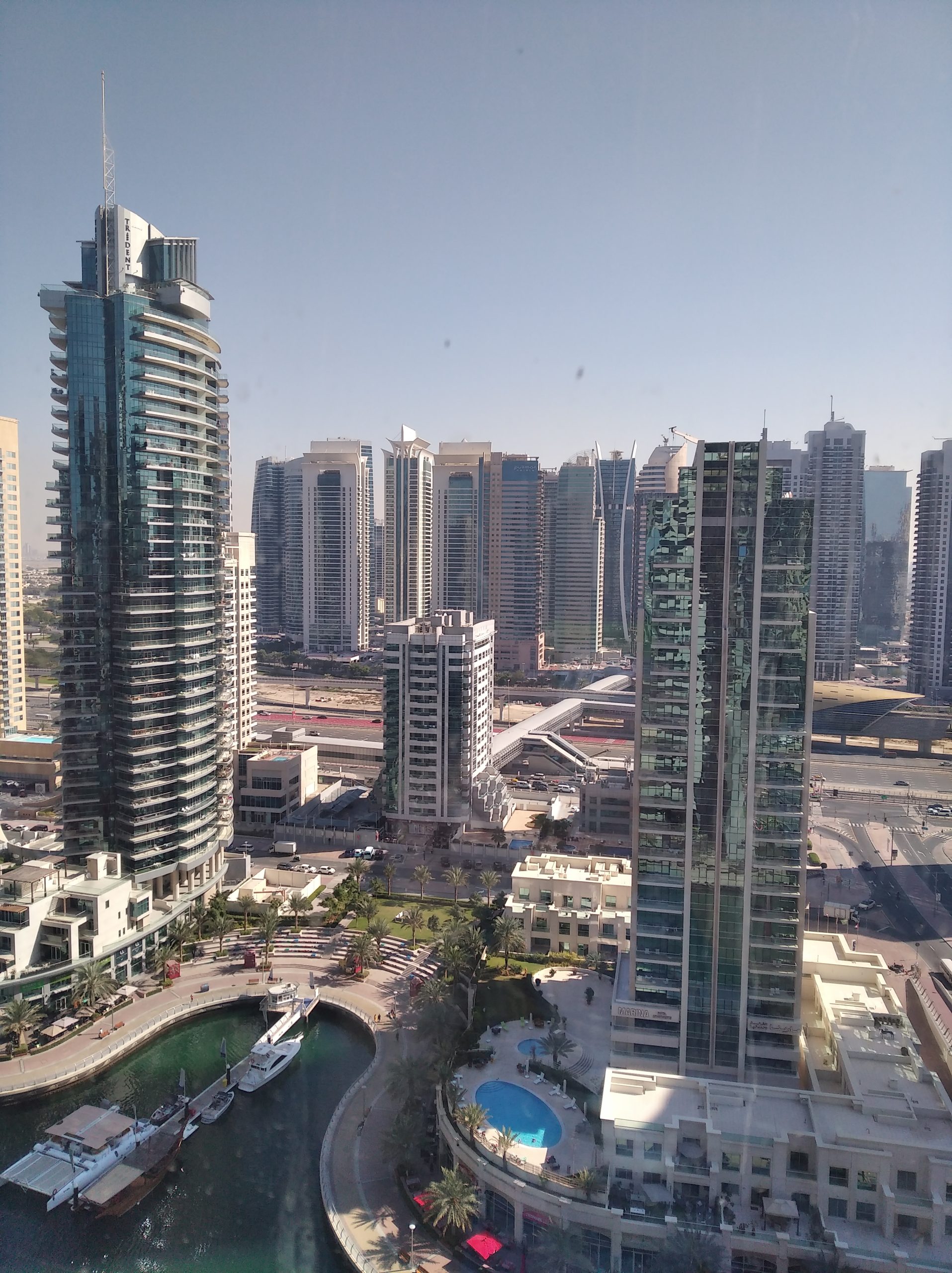Running virtualy around the world
Beyond the finish line
2020 on October 1st, Aidas Ardzijauskas started his longest and most crucial challenge, to conquer 30303 km in just 444 days, running virtually around the globe, in average running around 78 km daily. The 50-year-old Lithuanian became the 14th person to circumnavigate the planet. Sadly, A. Ardzijauskas could not physically go around the world due to the COVID-19 pandemic conditions, so he had to run around in circles in Lithuania.
The runner, who made an innovative decision, used an app specially created for him and thus recorded his running statistics and transferred everything to an interactive travel plan, which displayed the runner's position both on the supposed world map and in the real area of Lithuania.
Aidas ran almost all 30,303 kilometers in Lithuania: in Vilnius, Kaunas or the seaside, but he only managed to run in Dubai, Holland and Rome because of the pandemic restrictions.
A. Ardzijauskas, under the care of the doctors of the Kaunas Sports Clinic and the scientists of the Lithuanian Sports University, suffered several minor injuries in the heat of his run. According to the runner, any fears related to this problem were dispelled by the extremely professional help of specialists.

Physical Transformation: Insights from the Virtual Journey
Perhaps the most noticeable change after going around the world virtually was the loss of muscle mass. According to Aidas, all muscles have shrunk by at least a few centimeters: arms, torso, legs have shrunk. Perhaps only the circumference of the calf at the knee has not changed. The body simply adapted and got rid of what it didn't need.
When measuring with special equipment, it was also seen that, compared to the indicators before the start of this run, both the strength and speed of the runner's body decreased. The body weight also decreased by several kilograms.But according to Aidas, whether it's a few kilograms more or less, if I can do it, I'm still running.
The ultramarathoner says that not only Lithuanian, but also foreign scientists will analyze the data collected on his body during the run, as well as the data after the finish. For some foreign scientists, these data will be presented without mentioning Aidas and the challenge he overcame, because in this way it will be possible to obtain more objective conclusions about the body and its changes or endurance. Although at least 14 other people have gone around the world without Echo, far from all of them have been so thoroughly studied and observed by specialists, so the goal set by the Lithuanian can also serve the global scientific and medical community in studying the body, the organism's activities and discovering its limits.
"Around the World with Lithuania in the Heart" - A. Ardzijauskas.
For this run, Aidas dedicated nearly a decade to training, preparing his body to conquer various challenging situations. Over this period, he gathered a wealth of knowledge, not only concerning the technical aspects of running but also regarding the specific psychological challenges inherent in endurance attempts. He learned to comprehend the different sides of his own body, gaining insights into its limits, strengths, and vulnerabilities. Additionally, through countless kilometers of running and overcoming obstacles, he improved his mental strengths, developing durability, determination, and a deep understanding of persistence. This journey of physical and psychological growth equipped him with invaluable skills and wisdom that would prove indispensable during his ambitious undertakings.
"When I run, I strive to maintain discipline and a routine. Typically, I wake up at 5 in the morning to start my run. I take breaks during the hottest parts of the day. On average, I'm on my feet for about 12-13 hours, with actual running taking up 10-11 hours of that time.
It all depends on my health. There are times when I don't feel well, but I still go out to monitor my condition during those kilometers. On several occasions, I've had to miss flights due to my running schedule." Also Aidas often ran with like-minded people who brought a little more emotion.
The athlete completely used at least one pair of running shoes per month, resulting in a total of 12-13 pairs used throughout the entire period, all of which are now on display in a museum.
A. Ardziauskas finish, which marked the climax of the Kaunas Christmas Run, was accompanied by an avalanche of impressive numbers in Aidas' favor, with a total of 30,303 kilometers run.
“It will be interesting to watch the recovery. For example, I used to be able to do 100 push-ups without problems, but now I can only do 15. I used to be able to do 20 pull-ups, but now I can only do one. You can see the difference. The muscles decreased in size but became "stronger". They need to be loosened and then strengthened in terms of mass. At the moment, my body hardly accepts even the desire to run", explained A. Ardziauskas after finishing the run.




For more information:
Copyright 2020 - Aidas Ardzijauskas - All Rights Reserved
Powered by OptimizePress 2.0












